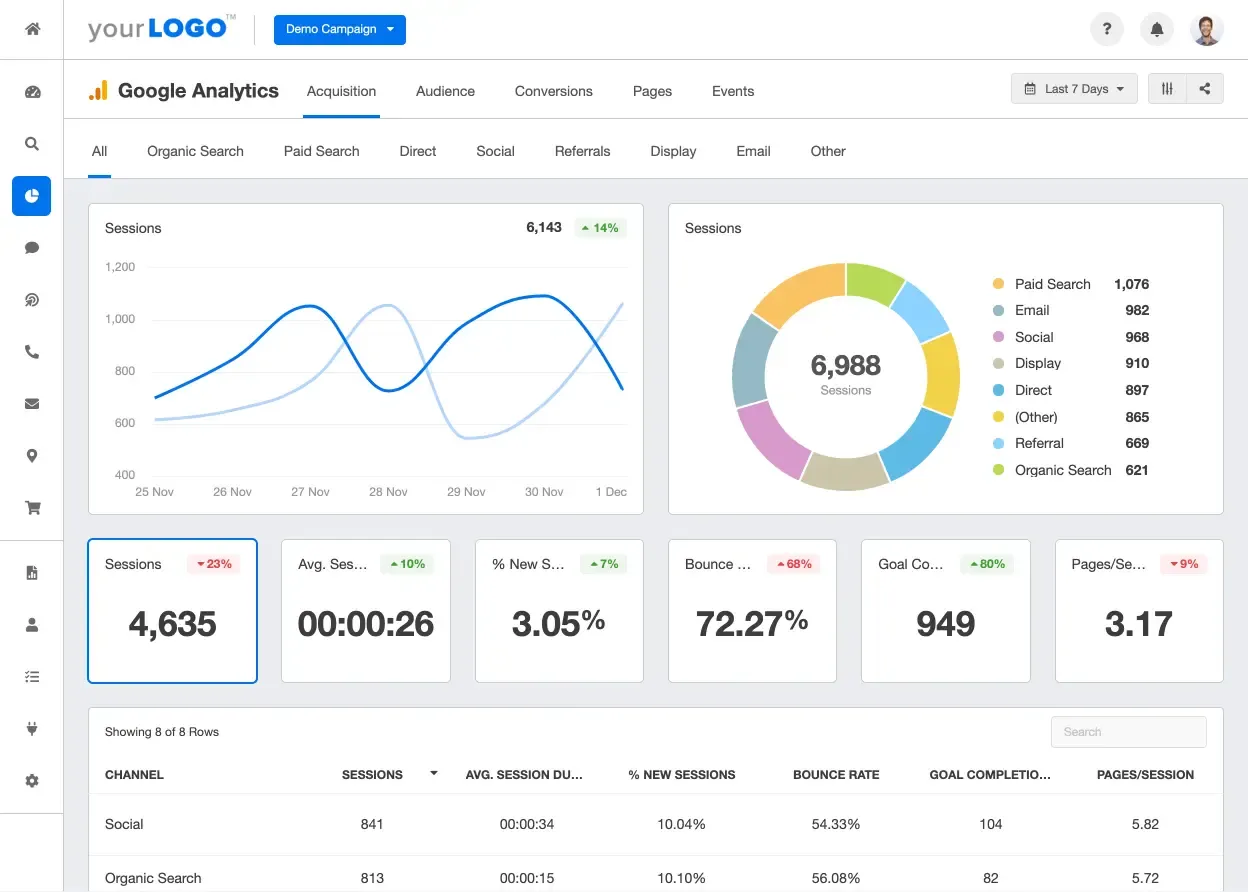Introduction to Sales Playbook

What is a Sales Playbook
A sales playbook is a comprehensive document that outlines your company’s sales strategy, processes, and best practices. It provides a detailed framework for sales teams on how to engage with potential customers, manage sales opportunities, and close deals effectively.
The playbook includes scripts, best practices, guidelines, and tools that are tailored to different selling situations, helping sales reps to perform consistently and efficiently.
Why Creating a Sales Playbook is Important
Creating a sales playbook is essential for ensuring consistency and efficiency across a sales team. It acts as a strategic blueprint that guides sales reps through the complexities of selling products or services.
1. Streamline Sales Processes
A well-defined sales playbook helps streamline various sales processes. This uniform approach can reduce the time it takes to train new sales reps by up to 50%, as they can quickly learn proven practices and methodologies from the playbook.
- Details the step-by-step actions to take in common sales scenarios.
- Offers quick reference materials that sales reps can use to handle objections or follow up with leads.
2. Improve Sales Performance
Organizations that implement a standardized sales process, as outlined in a sales playbook, can improve their sales performance by 15-20%. The playbook provides reps with strategies and tactics that are aligned with the company’s sales goals.
- Instructs reps on how to effectively nurture leads and close deals.
- Includes key performance indicators to measure progress and success.
3. Enhance Sales Team Collaboration
Sales playbooks foster better collaboration within teams by clearly defining roles and responsibilities. This clarity helps prevent overlap in tasks and ensures that each team member knows their specific duties.
- Clarifies the roles of sales reps, sales managers, and marketing teams.
- Promotes a unified approach to reaching sales targets.
4. Adapt to Market Changes
Sales playbooks can be updated regularly to adapt to new market conditions or changes in business strategy. This adaptability ensures that the sales team remains effective despite external shifts.
- Provides a framework for incorporating new sales techniques or tools.
- Allows the sales strategy to evolve with customer needs and market trends.
Key Components of a Sales Playbook

A sales playbook is an essential tool for aligning your sales team with your company’s core strategies and operational tactics. It provides comprehensive guidance to ensure that every team member is equipped with the necessary information to engage effectively with potential customers
1. Company Overview
This section serves as an introduction to the company for sales representatives, especially those new to the team. It ensures that all members are fully versed in the company's identity and can communicate it effectively.
Mission and Values: Clearly states the company's mission and core values, reinforcing the culture and guiding principles that drive the business.
History and Milestones: Highlights the company's key achievements and historical milestones, building a narrative that can be shared with prospects to enhance credibility.
Market Position and Competitiveness: Discusses the company’s standing in the industry, including its market share and competitive advantages.
- Example: "As of last year, our company controlled 15% of the market share in our sector, making us the third largest provider of [product/service]."
Leadership and Management: Profiles of key executives and their roles within the company, which can be useful during discussions with clients who are interested in understanding the strength and expertise of our leadership.
2. Products and Pricing
Detailed information on the products or services offered by the company is crucial for sales teams to effectively communicate and sell to potential customers. This section should be comprehensive and user-friendly.
Product Descriptions: A detailed overview of each product or service, including features, benefits, and potential applications.
- Example: "Our flagship product, [Product Name], features advanced technologies that improve [specific function], leading to a 30% reduction in [common issue]."
Unique Selling Propositions (USPs): Clearly articulates what makes the products or services unique compared to competitors. This is particularly useful in industries where differentiation is subtle but critical.
Pricing Structure: A complete guide to the pricing models and strategies for different products or services. This section often includes:
- Base prices, volume discounts, and bundled offers.
- Special promotions or pricing adjustments based on market conditions or competitive dynamics.
- Example: "Volume discounts start at a 10% reduction for orders exceeding 100 units, with incremental discounts scaling up to 20% for orders of 500 units or more."
Comparison with Competitors’ Offerings: Provides sales teams with direct comparisons between your products and those of competitors, enabling them to address specific points during negotiations.
- Example: "While similar products in the market offer [feature], our [Product Name] extends [additional benefit] which is unmatched by our main competitors."
3. Commission Structure
This section explains how sales representatives are compensated, which is a significant motivator that directly impacts their performance and dedication.
Base Salary Plus Commission: Details the foundational salary and how commissions are structured over that base. This is commonly presented in a tiered format, where commissions increase with higher levels of sales.
- Example: "Sales reps receive a base salary of $40,000 annually, with a 5% commission on sales up to $100,000 and 7% on sales exceeding that amount."
Commission Caps and Thresholds: Outlines any maximum limits or thresholds that affect earning potential. Understanding these caps is important for reps to gauge their potential earnings and plan their sales strategies accordingly.
Special Incentives and Bonuses: Describes additional incentives for surpassing sales targets, closing particularly challenging deals, or selling certain products during promotional periods.
- Example: "A quarterly bonus of $2,000 is awarded to any rep who exceeds their sales target by 20% or more."
Payment Schedule: Specifies how often commissions are calculated and paid out, which helps reps manage their expectations and financial planning.
4. Define Your Sales Methodology for Sales and Marketing Teams
Defining the sales methodology provides a systematic approach to selling that aligns with the company’s goals and customer engagement strategies.
Overview of Chosen Methodology: Whether it's Solution Selling, SPIN Selling, Challenger Sale, or another methodology, the playbook should detail the chosen approach and explain why it’s effective for your market and products.
- Example: "Our team uses the Challenger Sale methodology, focusing on teaching, tailoring, and taking control of the sales conversation to deliver unique insights to our customers."
Step-by-Step Process: Breaks down the sales methodology into actionable steps tailored to the stages of the sales cycle.
- For instance, in Solution Selling, the playbook might outline steps like identifying pain points, proposing tailored solutions, and demonstrating potential ROI to the prospect.
Techniques for Engaging Prospects: Provides specific techniques or conversation guides that align with the methodology, such as how to ask discovery questions or handle objections.
- Example: "When identifying client needs, use open-ended questions that probe deeper into their daily challenges and the inefficiencies they encounter."
Tools and Resources to Support the Methodology: Lists any CRM systems, sales intelligence tools, or other software that supports the methodology, including how and when to use these tools effectively.
Training and Mastery: Describes the training programs in place to help reps learn and master the sales methodology, including initial training sessions and ongoing learning opportunities.
- Example: "New reps undergo a two-week intensive training program on the Challenger Sale methodology, followed by monthly workshops to refine techniques and share best practices."
5. Provide Overview of the Sales Process

This part of the playbook outlines the complete journey a sales rep takes with a prospect. It is crucial for ensuring that all team members understand the standardized approach to selling.
- Stages of the Sales Cycle: Detail each phase of the cycle, such as lead generation, qualification, needs assessment, solution pitching, negotiation, and closure.
- Purpose of Each Stage: Explain the objectives of each stage. For instance, the goal of the qualification stage is to ensure that resources are focused on leads with a high potential for conversion.
Detailed Breakdown of Each Stage
Lead Generation:
- Methods and tools used for generating leads, such as inbound marketing, social media, or cold calling.
- Key performance indicators (KPIs) to track, like the number of leads generated and lead response rate.
- Example: "Our lead generation efforts last quarter resulted in a 25% increase in qualified leads through targeted LinkedIn campaigns."
Lead Qualification:
- Criteria for qualifying leads, such as budget, authority, needs, and timeline (BANT).
- Tools used for tracking and managing leads, typically a customer relationship management (CRM) system.
Needs Assessment:
- Techniques for understanding and documenting customer needs and pain points.
- Example questions to uncover deep insights into the customer’s business challenges.
- Example: "During needs assessment, use consultative questioning to identify the customer's key challenges, which, last year, increased our conversion rates by 30% in the needs-assessment stage."
Solution Pitching:
- Guidelines on how to align the product's features and benefits with the identified needs of the customer.
- Case studies or success stories that demonstrate the product’s effectiveness in similar scenarios.
Negotiation and Closing:
- Strategies for handling objections and negotiating terms.
- Closing techniques that encourage the customer to make a decision, such as limited-time offers or bundling products for added value.
- Example: "Effective negotiation techniques have improved our deal closure rate by 20% over the past fiscal year."
Tools and Resources
- Sales Enablement Tools: List of tools that support sales reps through the process. This could include CRM software, sales intelligence tools, and proposal generation software.
- Documentation and Collateral: Examples of sales collateral that can be used at different stages, such as brochures, presentations, and detailed proposals.
6. Identifying Target Buyer Personas
Understanding your target buyer personas is fundamental in aligning your sales and marketing efforts with the preferences and needs of your potential customers.
Definition of Buyer Personas:
- Detailed profiles that represent typical customers based on market research and real data about your existing customers.
- Includes demographic information, behavior patterns, motivations, and goals.
- Example: "Our primary buyer persona, 'Tech-Savvy Steve', is a mid-level manager in his 30s, who values cutting-edge technology that can streamline business operations."
Use of Personas in Sales:
- Guides the customization of communication and sales approaches to resonate with different types of buyers.
- Helps in predicting the concerns and objections they might have, and how best to address them.
Role in Content Creation:
- Directs the development of targeted content that addresses the specific interests and needs of each persona.
- Ensures that all marketing materials, from email campaigns to product brochures, speak directly to the identified needs and pain points of each persona.
7. The Plays: Tailored Sales Strategies
The "plays" in a sales playbook are the specific actions or strategies that sales reps should take when engaging with prospects at various stages of the sales process. These are tailored to fit the unique scenarios that might arise with different buyer personas.
Definition and Purpose of Sales Plays:
- Structured, repeatable instructions that help sales reps handle common sales scenarios effectively.
- Designed to convert leads into customers by addressing specific needs, challenges, or opportunities.
- Example: "One of our key sales plays involves demonstrating product scalability to 'Enterprise Emma' to align with her goal of business growth and risk management."
Examples of Common Sales Plays:
- Educational Play: Focuses on providing valuable information and insights to help the buyer make an informed decision.
- Consultative Play: Involves deep engagement to understand and solve the specific problems of the buyer.
- Competitive Play: Used when the prospect is considering competitors' products, focusing on highlighting your unique advantages.
Tools Supporting Sales Plays:
- Specific scripts, email templates, and presentation decks that are aligned with each play.
- CRM systems programmed with reminders and prompts to execute certain plays based on the sales stage and buyer interaction.
Measurement and Optimization:
- Each play includes metrics for success, such as conversion rates or engagement levels.
- Regular reviews and feedback loops ensure that plays are updated based on their effectiveness and changing market conditions.
- Example: "Our quarterly review showed a 40% increase in engagement from using the Consultative Play with senior management personas, leading to a 15% increase in conversions."
8. Effective Utilization of Sales Tools for Sales Team
The right sales tools can dramatically enhance the efficiency and effectiveness of sales activities. This section of the playbook explains how to integrate these tools into daily sales operations.
Overview of Sales Tools:
- Detailed descriptions of each tool used by the sales team, including CRM systems, data analytics platforms, communication tools, and automation software.
- Explanation of the purpose and benefits of each tool to help reps understand why they are essential.
- Example: "Our CRM software has been shown to reduce time spent on data entry by 30%, allowing reps more time to engage with prospects."
Guidelines for Using Sales Tools:
- Step-by-step instructions on how to use each tool effectively during different stages of the sales cycle.
- Tips and best practices for maximizing the potential of these tools to improve productivity and customer engagement.
Integration with Sales Processes:
- Specific examples of how these tools integrate with the sales processes outlined in the playbook.
- Scenarios where tools can automate repetitive tasks or provide critical insights to guide sales decisions.
- Example: "Use the analytics feature in our CRM to identify purchasing patterns among high-value clients and tailor your sales pitches accordingly."
9. Monitoring and Evaluating Key Performance Indicators (KPIs)

Measuring performance is crucial for assessing the effectiveness of sales strategies and making necessary adjustments. This section of the playbook defines the KPIs that sales reps and managers should focus on.
Definition of Key Performance Indicators:
- List of the most important metrics that the sales team should track, such as lead conversion rates, average deal size, sales cycle length, and customer acquisition cost.
- Explanation of why each KPI is important and how it relates to the overall sales goals.
- Example: "Monitoring the sales cycle length helps us identify bottlenecks in the sales process and provides insight into how we can close deals faster."
Tracking and Reporting:
- Procedures for tracking these KPIs using sales tools and software.
- Guidelines on how often to report these metrics and to whom, ensuring that data is used effectively to drive decisions.
Use of KPIs to Drive Improvement:
- Strategies for using KPI data to improve individual performance and refine sales strategies.
- Examples of successful adjustments made in response to KPI analysis, such as changes in sales tactics or team restructuring.
- Example: "Last quarter, we adjusted our lead qualification criteria based on KPI analysis, which increased our conversion rate by 20%."
Benchmarking and Goal Setting:
- How to set realistic yet challenging targets based on historical performance and industry standards.
- Encouragement for ongoing self-assessment and goal adjustment to continually push for improved results.
10. Crafting Effective Sales Messaging for Sales Reps
Effective messaging is pivotal in engaging prospects and moving them through the sales funnel. This section of the playbook outlines how to develop and deliver messages that resonate with target audiences.
Principles of Effective Messaging:
- Emphasizing clarity and conciseness to ensure that communication is straightforward and easy to understand.
- Tailoring messages to address the specific needs, pain points, and interests of different buyer personas.
- Example: "When communicating with 'CFO Chris', focus on cost savings and ROI to align with their top priorities."
Types of Sales Messages:
- Introductory Messages: How to introduce yourself and your company in a way that piques interest.
- Follow-up Messages: Strategies for follow-up communications that keep prospects engaged without being intrusive.
- Closing Messages: Techniques for crafting persuasive closing messages that encourage prospects to make a decision.
- Example: "Our follow-up messages should always include a reference to a previous conversation or point of interest to maintain a connection."
Channel-Specific Strategies:
- Guidelines for adapting messages for different communication channels such as email, phone, social media, and face-to-face meetings.
- Best practices for each channel, including timing and frequency of messages.
11. Mastering Time Management in Sales
Efficient time management is crucial for maximizing the productivity of sales teams. This section provides strategies for managing time effectively to ensure that sales reps can focus on activities that drive sales.
Prioritization of Tasks:
- Techniques for identifying and focusing on high-value activities that directly contribute to sales goals.
- Tools for prioritizing leads based on their likelihood to convert, ensuring that time is spent on the most promising opportunities.
- Example: "Utilize the lead scoring system in our CRM to determine which prospects to contact first based on their engagement levels and purchase potential."
Scheduling and Planning:
- Advice on planning the day or week to allocate time effectively across different tasks, including prospecting, meeting with clients, and administrative duties.
- Use of calendar tools to block out time for focused sales activities, preventing overbooking and ensuring adequate preparation for each task.
Efficiency Techniques:
- Methods for minimizing time wastage, such as batch processing similar tasks and setting specific time limits for meetings and calls.
- Recommendations for automation tools that can handle repetitive administrative tasks, allowing sales reps to dedicate more time to selling.
- Example: "Adopt the practice of setting 30-minute time limits for initial sales calls to keep discussions concise and focused."
Regular Reviews:
- Encouraging regular review of personal and team schedules to identify areas for efficiency improvements.
- Setting up weekly or monthly check-ins to assess time management effectiveness and make necessary adjustments.
How to Create a Sales Playbook

Creating a sales playbook involves compiling comprehensive and strategic content that guides your sales team through every aspect of the sales process, from initial contact to closing deals and nurturing client relationships.
It's a critical tool that ensures all team members are aligned and effective in their roles. Here's a step-by-step guide on how to create a sales playbook, incorporating the essential elements we've discussed:
Step 1: Gather Input from Stakeholders
Start by consulting with key stakeholders within your sales, marketing, and product teams. Their insights are invaluable in understanding what works, what doesn’t, and what’s needed in the playbook.
- Interviews and Surveys: Conduct interviews with top-performing sales reps, sales managers, and marketing personnel to gather qualitative data.
- Review Historical Sales Data: Analyze past sales performance to identify successful strategies and common obstacles.
Step 2: Define the Sales Process
Outline a clear and detailed sales process that will be the backbone of your playbook. This should be a step-by-step guide that describes each stage of the sales cycle.
- Stages of the Sales Cycle: Document each phase, from lead generation to closing and follow-up.
- Best Practices: Include proven techniques and strategies for each stage.
Step 3: Develop Content for Each Section
Utilize the information gathered and the insights from your team to fill in the details for each section of the playbook.
Sections to Include:
- Company Overview: Mission, history, competitive advantage.
- Products and Pricing: Detailed descriptions, pricing strategies, and competitive comparisons.
- Commission Structure: Compensation details and performance incentives.
- Sales Methodology: Adopted sales techniques and approaches.
- Sales Process: Step-by-step guide through the sales cycle.
- Target Buyer Personas: Profiles of ideal customers.
- The Plays: Specific strategies for common sales scenarios.
- Using Sales Tools: How to effectively use CRM, data analytics tools, etc.
- Key Performance Indicators: Metrics to measure success.
- Effective Messaging: What to say to prospects at each stage.
- Time Management: Strategies for prioritizing and managing sales activities.
Step 4: Integrate Tools and Resources
Provide resources that support the sales strategies outlined in the playbook.
- Templates and Scripts: For emails, calls, presentations.
- Sales Collateral: Brochures, case studies, product datasheets.
- Technology Tools: CRM and other sales automation software.
Step 5: Implement Training and Role-playing
Ensure that every sales rep understands how to use the playbook through comprehensive training sessions and role-playing exercises.
- Initial Training: Introduce the playbook and walk through each section.
- Ongoing Training: Regular sessions to cover updates and deep dives into complex scenarios.
Step 6: Measure and Optimize
Regularly review the effectiveness of the sales playbook and make adjustments based on feedback and evolving market conditions.
- Feedback Loops: Solicit feedback from the sales team on what’s working and what’s not.
- Performance Review: Look at the KPIs to gauge whether the sales strategies in the playbook are effective.
Step 7: Maintain and Update
A sales playbook is a living document that should evolve as your products, markets, and sales techniques change.
- Scheduled Reviews: Set times to review and update the playbook—typically every six months or annually.
- Adapt to Changes: Quickly integrate new products, market strategies, or sales methodologies into the playbook.
Creating Plays Within Your Sales Playbook

What Are Sales Plays
Sales plays are specific strategies and actions designed to handle common sales situations or opportunities effectively.
They are essentially scripts and guidelines that sales teams can use to engage potential customers and move deals forward. Each play is tailored to address particular scenarios that sales reps might encounter, making them crucial components of a good sales playbook.
- Purpose: The primary goal of sales plays is to provide a repeatable and tested approach to common sales scenarios, helping reps to respond quickly and effectively.
- Structure: Typically, a sales play includes the scenario description, the objective, step-by-step actions, expected outcomes, and sometimes, contingency plans.
How to Develop Sales Plays for Different Scenarios
Developing effective sales plays requires a deep understanding of your customers, market, and the sales environment. These plays should be dynamic and evolve as new insights and data become available.
Identify Common Scenarios:
- Lead Qualification: Plays for determining the potential of leads to become customers.
- Objection Handling: Scripts and tactics for common objections, such as price or product features.
- Closing Techniques: Strategies designed to close the deal effectively and efficiently.
- Example: "Our most effective closing play, which involves a demonstration of ROI, has improved close rates by 25% in the past year."
Collaborate with the Sales Team:
- Gather input from sales reps who are regularly interacting with customers. They can provide real-life insights into what works and what doesn’t.
- Review past sales data to identify patterns and successful strategies that can be standardized into plays.
Drafting the Play:
- Scenario Description: Clearly define the situation where the play should be used.
- Objective: State what the play aims to achieve (e.g., move the prospect to the next stage, close a deal).
- Steps: List the actions to be taken, including dialogue suggestions and timing.
- Tools and Resources: Specify any tools or resources, such as presentations or sales playbook templates, that can support the execution of the play.
- Example: "In our lead qualification play, reps are instructed to use a scoring system based on the lead’s budget, authority, needs, and timeline."
Training and Role-playing:
- Conduct training sessions where sales reps can practice the plays in controlled role-playing scenarios. This helps to refine the plays and build confidence.
- Use feedback from these sessions to tweak and improve the plays.
Measurement and Refinement:
- Establish metrics to evaluate the effectiveness of each sales play.
- Regularly review performance and adapt the plays as necessary to keep them relevant and effective.
- Example: "We track the success rate of each play through our CRM and adjust the scripts quarterly based on this data."
Documentation and Accessibility:
- Ensure that all sales plays are documented in an easy-to-understand format within your own sales playbook.
- Make the playbook accessible to all sales team members, ideally through a digital platform where updates can be distributed quickly.
Sales Plays to Include in Your Playbook

Here’s a detailed look at essential sales plays to include in your playbook to enhance its effectiveness:
1. Lead Generation Play
Objective: To identify and capture new leads through targeted outreach.
Actions:
- Utilize social media platforms for engaging potential leads through content marketing.
- Conduct webinars and online workshops to attract interest and gather contact information.
Tools: CRM for tracking interactions, social media management tools, webinar software.
Metrics: Number of leads generated, lead conversion rate.
2. Initial Contact Play
Objective: To establish a connection with new leads and set the stage for further communication.
Actions:
- Send personalized emails or messages tailored to the lead’s industry and observed needs.
- Follow up with a phone call to discuss their challenges and how your solutions can help.
Tools: Email templates, CRM for scheduling and tracking calls.
Metrics: Response rate, number of scheduled follow-up meetings.
3. Discovery Play
Objective: To gather detailed information about the prospect’s needs, challenges, and buying process.
Actions:
- Conduct a needs-assessment meeting to dive deeper into the client’s requirements.
- Use open-ended questions to uncover key pain points and decision-making processes.
Tools: Needs assessment forms, note-taking apps.
Metrics: Quality and depth of information gathered, progression to proposal stage.
4. Objection Handling Play
Objective: To effectively address common objections and concerns raised by prospects.
Actions:
- Prepare responses for typical objections such as price, product fit, or timing.
- Reassure prospects with data, testimonials, or case studies demonstrating the value and effectiveness of your solution.
Tools: List of common objections and rehearsed responses, success stories, case study documents.
Metrics: Objection resolution rate, conversion rate post-objection.
5. Closing Play
Objective: To convert prospects into customers by effectively closing deals.
Actions:
- Summarize the key benefits and ROI of your solution tailored to the prospect’s specific needs.
- Offer incentives or limited-time discounts to encourage immediate decision-making.
Tools: Pricing calculators, proposal software, electronic signature tools.
Metrics: Closing rate, average time to close.
6. Nurturing Play
Objective: To maintain and enhance relationships with existing customers to encourage repeat business and referrals.
Actions:
- Send regular updates about new features, services, or content that may interest the customer.
- Invite customers to exclusive events or provide them with free training or resources.
Tools: Email marketing software, event management tools.
Metrics: Customer retention rate, frequency of repeat purchases, referral rate.
7. Expansion Play
Objective: To identify opportunities for upselling and cross-selling to existing customers.
Actions:
- Review customer usage and satisfaction data to identify upsell or cross-sell opportunities.
- Present tailored proposals that address the evolving needs of the customer.
Tools: Analytics tools, CRM reports, personalized proposal templates.
Metrics: Upsell/cross-sell conversion rates, customer lifetime value.
Best Tools to Use for Sales Playbooks

Implementing the right tools can significantly enhance the effectiveness and usability of your sales playbook.
These tools facilitate the automation of routine tasks, provide valuable insights, and ensure that your sales team has access to the information they need when they need it. Here’s a rundown of some of the best tools to consider integrating into your sales playbook:
1. Customer Relationship Management (CRM) Systems

Examples: Salesforce, HubSpot, Zoho CRM
- Benefits: Streamlines lead management, automates follow-ups, and tracks customer interactions throughout the sales cycle. Provides analytics and reporting features to measure performance.
2. Communication Tools

- Examples: Slack, Microsoft Teams
- Benefits: Facilitates seamless communication within sales teams and across departments. Useful for quick updates, sharing files, and maintaining a central communication hub.
3. Document Management Systems

- Examples: Google Drive, Dropbox
- Benefits: Centralizes sales collateral, proposals, contracts, and playbook documents in one accessible, cloud-based location. Ensures version control and easy access.
4. Sales Enablement Platforms

- Examples: Seismic, Highspot
- Benefits: Provides sales teams with quick access to up-to-date sales content, playbooks, and training materials directly aligned with the sales process. Offers analytics to track content usage and effectiveness.
5. E-Signature Tools

- Examples: DocuSign, Adobe Sign
- Benefits: Streamlines the process of getting contracts and agreements signed. Reduces turnaround time and enhances the customer experience.
6. Proposal Generation Software

- Examples: PandaDoc, Proposify
- Benefits: Automates the creation of personalized proposals, making it easier to send professional, detailed, and tailored proposals quickly.
7. Analytics and Reporting Tools

- Examples: Tableau, Google Analytics
- Benefits: Provides insights into sales performance, customer behavior, and playbook effectiveness. Helps in making data-driven decisions to improve strategies.
How to Integrate Sales Tools into Your Playbook

Effectively integrating these tools into your sales playbook not only enhances functionality but also improves adoption rates among your sales team. Here’s how to go about it:
Define the Role of Each Tool
- Objective Matching: Clearly define what each tool is used for and how it fits into the sales process. For example, CRM systems can be used for tracking customer interactions and sales conversions, while communication tools are for internal discussions.
- When and How to Use: Provide guidelines on when and how to use each tool during different stages of the sales process. This ensures that the sales team understands the purpose and value of each tool.
Provide Training and Resources
- Training Sessions: Conduct regular training sessions to demonstrate the functionality and benefits of each tool. Ensure that every team member is comfortable and proficient with the tools provided.
- Documentation: Include user manuals, FAQs, and troubleshooting guides in the playbook. These resources can help solve common issues and reduce downtime.
Automate and Simplify Processes
- Integration: Where possible, integrate tools to work together seamlessly. For example, linking your CRM system with your email platform can automate the logging of customer communications.
- Simplify User Interfaces: Ensure that the tools are user-friendly and do not add unnecessary complexity to the sales process.
Concluding Thoughts
In conclusion, an effectively crafted sales playbook is crucial for enhancing sales efficiency and consistency. By detailing a comprehensive company overview, product information, and strategic sales methodologies, a playbook ensures that the sales team is well-equipped to engage successfully with potential customers.
Including tailored sales plays, a clear commission structure, and integrating the right sales tools enhances team collaboration and performance. Utilizing a sales playbook template ensures that all critical components are covered, allowing for regular updates based on feedback to maintain a dynamic and effective sales strategy. This approach not only optimizes sales processes but also empowers teams to achieve better results consistently.








